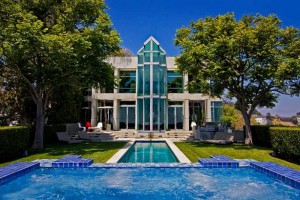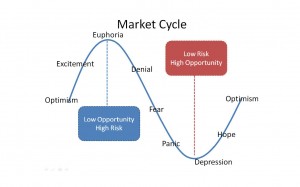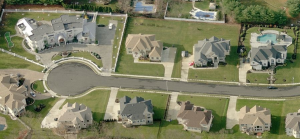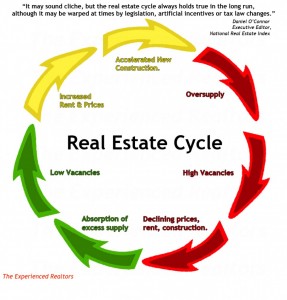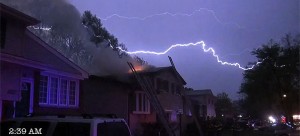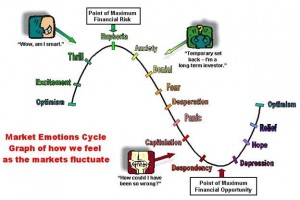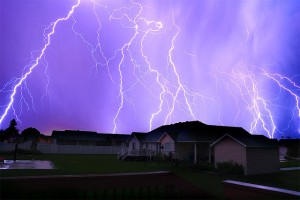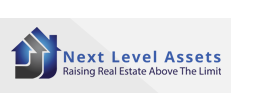What We See As 2015 Begins…
We blew a real estate/debt bubble, it popped, and now we are blowing another one. Consider:
- Treasury rates kept going down last year when everyone thought they must go back up.
- Junk bond rates are at ~6% versus a long-term average of ~9.5%.
- Mortgage rates continue near all-time lows, and lenders will loosen in 2015 to allow more 3% sub-prime borrower loans.
- Savings accounts yield nothing.
- Anyone who can get debt is grabbing as much as they can to profit on the cheap money.
- Student loan debt and sub-prime auto loan debt markets are stretched.
- Our government deficit keeps growing, and the Fed has monetized the debt.
- Real estate has appreciated 50% or more over 5 years in some markets/asset classes.
- Real incomes in the US have not really gone up in a decade: the middle class is being squeezed.
The Fed is blowing another bubble to cover our slack economy, caused by decades of trade imbalances (exporting jobs and IOUs to get stuff), enabled by easy consumer and government debt, in a system with too many disincentives to work. The Fed has no choice except blowing hard - all the other central banks are doing the same.
The result to real estate investors has been asset prices rising much faster than the disposable incomes of the people who pay us rent, or buy things from the people who pay us rent. This compresses the cap rate, or yield achievable from an asset. Not only does further compression-driven value appreciation become impossible, but eventually cap rates snap back in line. If an A-Class Apartment sells on the open market today for a 5.5% cap based on 4% debt, it might look like a good investment - but what happens if you need to roll that debt when mortgages are 8% and A-Class caps are 10% on reduced recession-level NOI? Default.
In short, we think the party looks good now, and maybe for another couple years, then the bubble pops and the music stops. We know it will happen because it always does - real estate and financial markets are cyclical, always have been, and rates eventually revert to the mean every time - then usually overshoot. Throughout history, everyone who said it is different this time has been wrong. The only things arguably different now are Internet connectivity (increases market volatility), The US Government & Federal Reserve tapped out (from spending/printing us out of the last crash), and China’s rise (cracks the dollar’s reserve currency hegemony). This combination will not be good when the top pops.
The challenge in seeing the cyclical top in advance is mighty hard, and real estate is not liquid - exiting a clean MLS house might take 3 months in a hot market, while selling a commercial asset can easily take a year. And shorting to hedge against an REI long is difficult. So in any real estate investment, you need to be prepared to tough it out into a down cycle. Anyone who tells you otherwise is suspect.
As Austrian economist Ludwig von Mises indicated, “there is no means of avoiding the final collapse of a boom brought about by credit expansion. The alternative is only whether the crisis should come sooner as the result of a voluntary abandonment of further credit expansion, or later as a final and total catastrophe of the currency system involved.”
At Next Level Assets, we create real estate opportunities offering a unique combination of characteristics intended to make them resilient to down-cycles, and worth holding through down cycles. Some of these characteristics include:
- Extremely high-quality assets that will always be in demand, with clear barriers to competition: if supply growth is zero, any demand growth will give us pricing power.
- Locations of above average demand growth, with a “story” (new highway, new airport, etc): we like the next hot market – NOT last year’s.
- Acquisition significantly below replacement costs and/or sales comps: we like to start with a big equity cushion to ensure against losing wealth, and stack the deck in favor of growing it.
- Above-market yield coming into project: like stocks, after a project’s development stage REI is all about income/yield/dividends, so we want high yields fast to make money at all points in the RE market cycle.
- Clear value-add path to provide yield and equity upside: we seek creative ways to improve performance that others don’t see, because that is the only way a deal becomes more valuable to us than to others.
- Low debt to ensure extremely low risk of financial loss: leverage cuts both ways, and high cap rates are a much safer path to wealth than high leverage.
In short, we seek trophy assets far smaller than institutional scale. When we find one at a bloody good price, we say “can we create a value add strategy here that others haven’t seen to make it more valuable?” If so, we are buyers.
When do we sell a hold deal? We look at the market price, and we sell when the yield we can achieve on our “mark to market” equity in a property gets so low that we say “we’d be crazy to buy our own property at the market price much less one like it that we don’t know, so if the market is crazier than crazy, it must be time to sell”.
We seek extreme value, and we run when values get extreme. Today, values appear inflated in some sectors, like mid to large size apartment communities, houses in many super-appreciated markets, and nearly anything at a cap rate below 8. We can still find extreme values in unique secondary/suburb market plays, and offshore. Outside the US, the Fed cannot distort values as much through cheap debt.
